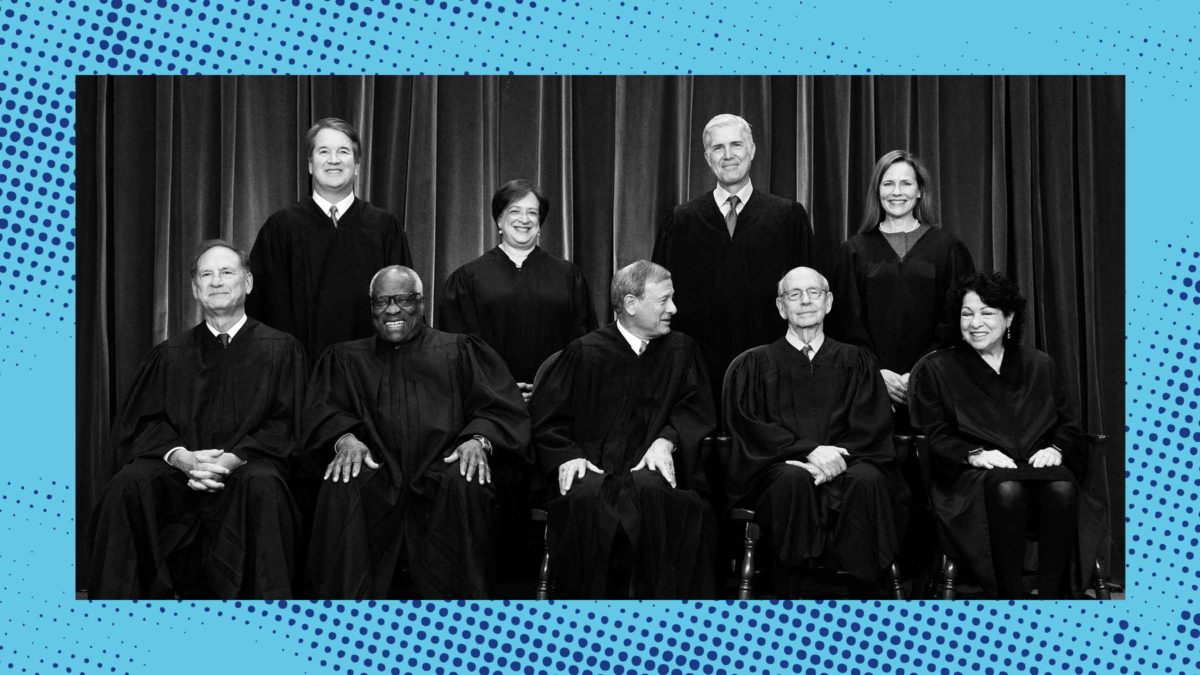Allen v. Milligan surprised everyone who cares about our multiracial democracy. Yet it’s cold comfort in the Supreme Court’s broader arc against it.
The Voting Rights Act of 1965 has been on life support for the past decade, mortally wounded by the Supreme Court’s 2013 decision in Shelby County v. Holder, and wound salted in Brnovich v. Democratic National Committee just two terms ago. This left many court watchers—and maybe even some justices—wondering whether the Court would finish the job in Allen v. Milligan. But a 5-to-4 majority issued a surprising ruling in the case on Thursday that keeps Section 2 of the act breathing, however shallowly. The opinion was authored by Chief Justice John Roberts, who I can only assume held his nose when upholding a law meant to protect voters of color from unlawful attacks on our exercise of political power.
The question in Milligan was whether Alabama’s congressional map likely violated Section 2 by diluting the voting power of Black Alabamians. As the 2020 Census showed, the Black population in Alabama has been growing, yet their political influence has not. Black people make up more than 1 in 4 Alabamians, but were a majority in only one of its seven congressional districts. This effectively constrained Black voters’ ability to elect a candidate of their choice to that single district. Notably, that one seat is also the product of citizen-sought judicial intervention under Section 2; after the 1990 Census, voters successfully challenged Alabama’s redistricting plan and won a court-ordered map that created a majority-Black district. The election held in 1992 relied on that court-ordered map, which allowed voters in the new district to elect Alabama’s first Black congressman since Reconstruction.
Roberts, of all people, recounts this and other history about Alabama and Section 2 in his majority opinion in Milligan—a case that yet again found Black Alabamians crossing their fingers and counting on courts, rather than their legislature, to attain meaningful representation in Congress. Roberts didn’t do anything especially groundbreaking—he simply applied settled law to a discrete set of facts and largely affirmed a finding by a lower court, which included two Trump appointees, that Alabama’s maps violated Section 2.
Perhaps aware that handing it to the same state that gutted the Voting Rights Act a decade ago in Shelby County would be a bad look, Roberts—plus Justices Sonia Sotomayor, Elena Kagan, Brett Kavanaugh, and Ketanji Brown Jackson—declined to go any further. Alabama wanted more, going so far as to maintain that reading Section 2 to allow an additional district where Black voters would have an actual shot at representation was itself unconstitutional. Roberts batted away those claims of unconstitutionality by leaning on precedent to preserve what’s left of what was once the most effective piece of civil rights legislation in American history. For once, he did the bare minimum and said what the law is.

No comments:
Post a Comment